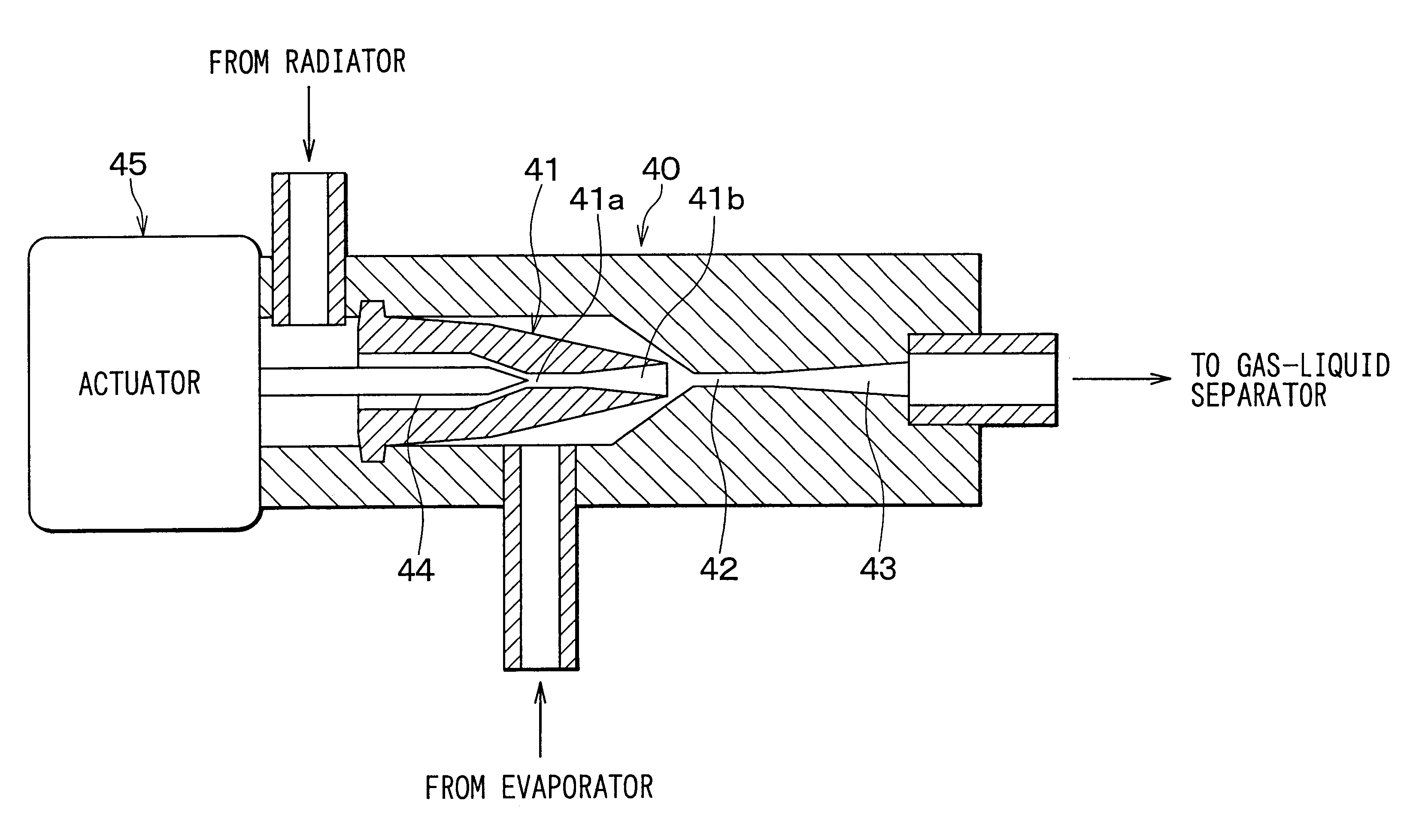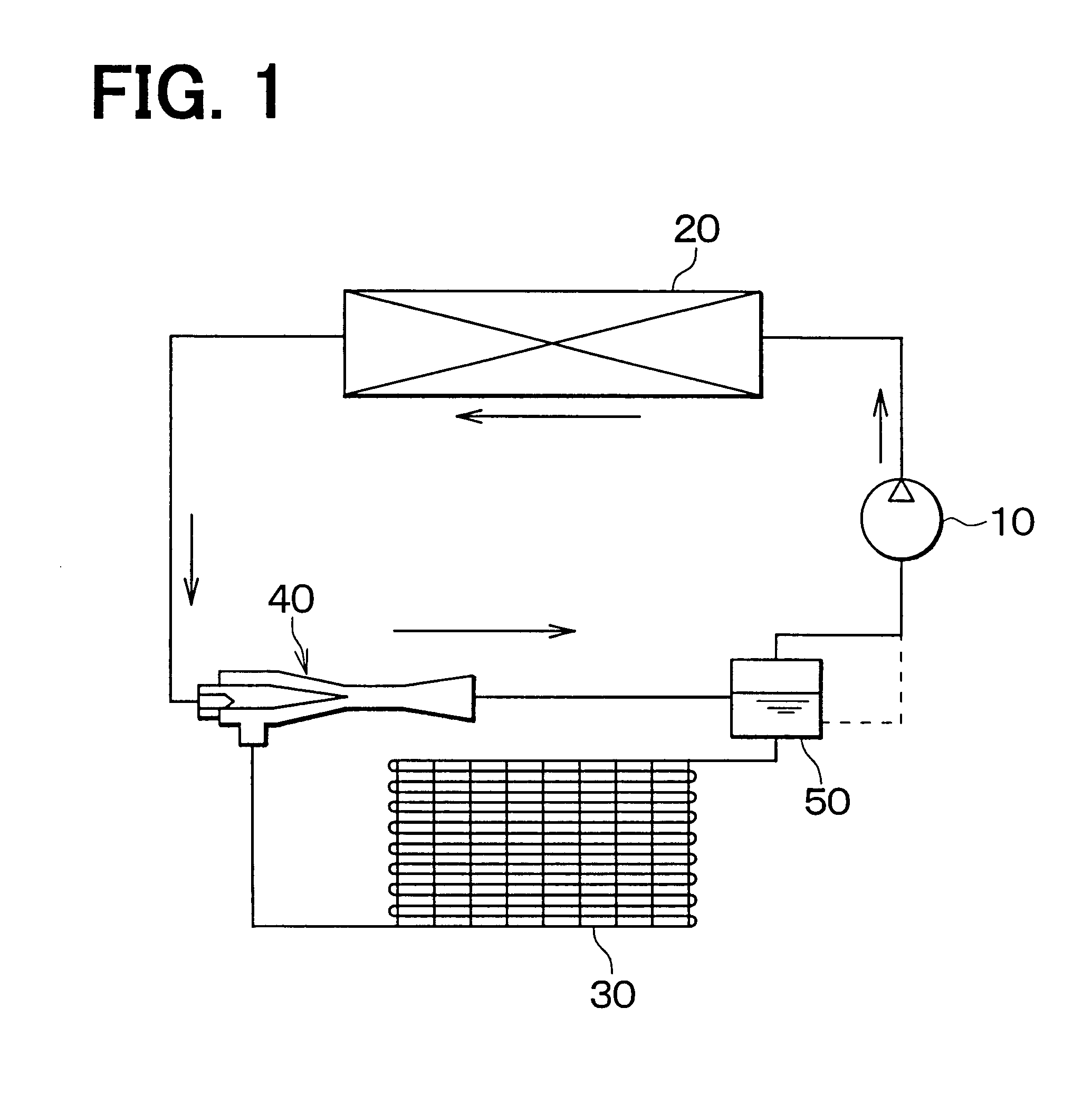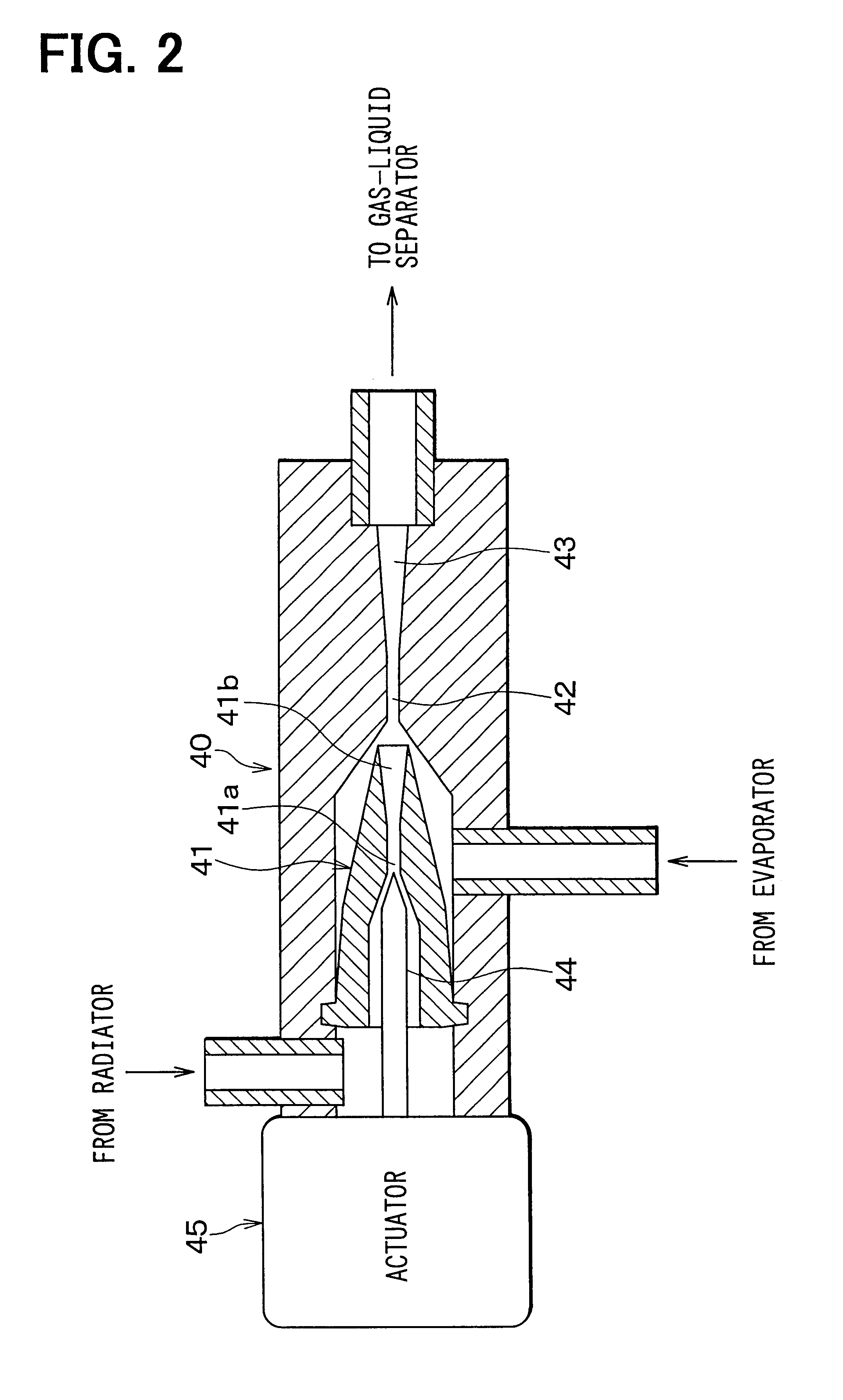Ejector decompression device with throttle controllable nozzle
a controllable nozzle and ejector technology, which is applied in the direction of refrigeration components, machines/engines, lighting and heating apparatus, etc., can solve the problems of insufficient increase of the pressure of refrigerant to be sucked to the compressor by the ejector, and inability to satisfactorily reduce the motive power consumed by the compressor
- Summary
- Abstract
- Description
- Claims
- Application Information
AI Technical Summary
Benefits of technology
Problems solved by technology
Method used
Image
Examples
first embodiment
(First Embodiment)
In the first embodiment, as shown in FIG. 1, an ejector for an ejector cycle is typically used for a heat pump cycle for a water heater. In the ejector cycle, the ejector is used as a decompression device for decompressing refrigerant. In the heat pump cycle shown in FIG. 1, a compressor 10 sucks and compresses refrigerant, and a radiator 20 cools the refrigerant discharged from the compressor 10. Specifically, the radiator 20 is a high-pressure heat exchanger that heats water for the water heater by heat-exchange between the refrigerant flowing from the compressor 10 and the water. The compressor 10 is driven by an electric motor (not shown), and a rotation speed of the compressor 10 can be controlled. A flow amount of refrigerant discharged from the compressor 10 is increased by increasing the rotational speed of the compressor 10, thereby increasing heating performance of the water in the radiator 20. On the contrary, the flow amount from the compressor 10 is re...
second embodiment
(Second Embodiment)
In the above-described first embodiment, as shown FIG. 3B, the inner wall surface of the nozzle 41 are formed into the two-step taper shape to have two taper angles .alpha.1, .alpha.2, so that the inner radial dimension d1 is reduced toward the throat portion 41a. However, in the second embodiment, as shown in FIG. 8, the inner wall surface has a taper angle gradually reduced toward the throat portion 41a, and is formed in a non-step taper shape so that the inner radial dimension d1 is reduced toward the throat portion 41a. Accordingly, the cross-sectional area of the refrigerant passage is smoothly and continuously changed in the nozzle 41, and turbulence can be further restricted from being generated in the refrigerant stream.
In the second embodiment, the other parts are similar to those of the above-described first embodiment. Accordingly, similarly to the first embodiment, the refrigerant is decompressed to the gas-liquid two-phase state at an upstream side of...
third embodiment
(Third Embodiment)
In the third embodiment, as shown in FIGS. 9A, 9B, the inner wall surface of the nozzle 41 is formed as a smoothly curved surface so that refrigerant is decompressed to the gas-liquid phase state at upstream from the throat portion 41a. In FIGS. 9A, 9B, 41d indicates an upstream area portion of the throat portion 41a, where the inner radial dimension d1 is reduced toward the throat portion 41a. Further, the nozzle 41, the mixing portion 42 and the diffuser 43 are set in the ejector 40 to have the sectional areas shown in FIG. 9B.
In the third embodiment, the other parts are similar to those of the above-described first embodiment. Accordingly, similarly to the first embodiment, the refrigerant is decompressed to the gas-liquid two-phase state at an upstream side of the throat portion 41a.
Although the present invention has been fully described in connection with the preferred embodiments thereof with reference to the accompanying drawings, it is to be noted that vari...
PUM
 Login to View More
Login to View More Abstract
Description
Claims
Application Information
 Login to View More
Login to View More - R&D
- Intellectual Property
- Life Sciences
- Materials
- Tech Scout
- Unparalleled Data Quality
- Higher Quality Content
- 60% Fewer Hallucinations
Browse by: Latest US Patents, China's latest patents, Technical Efficacy Thesaurus, Application Domain, Technology Topic, Popular Technical Reports.
© 2025 PatSnap. All rights reserved.Legal|Privacy policy|Modern Slavery Act Transparency Statement|Sitemap|About US| Contact US: help@patsnap.com



